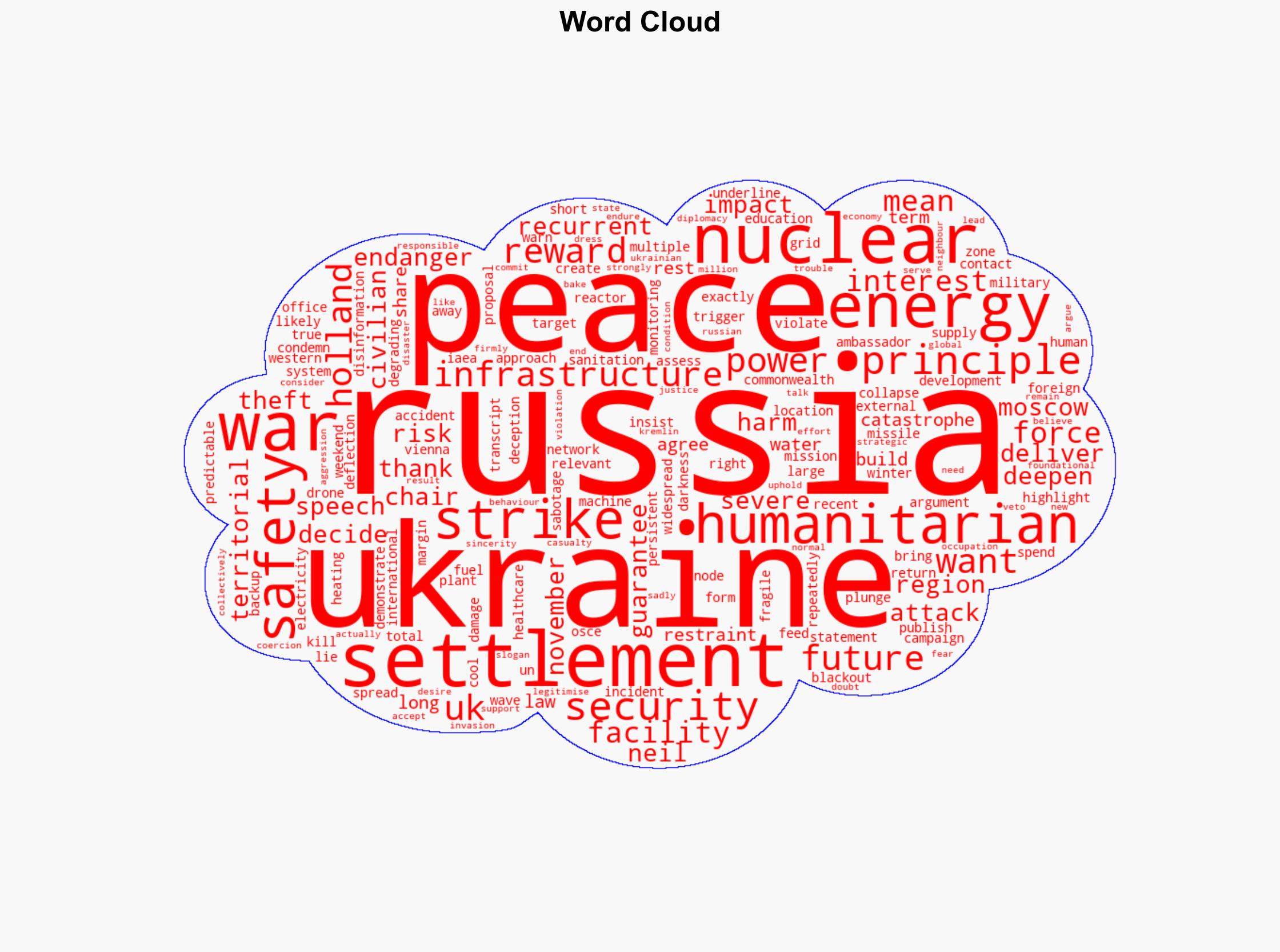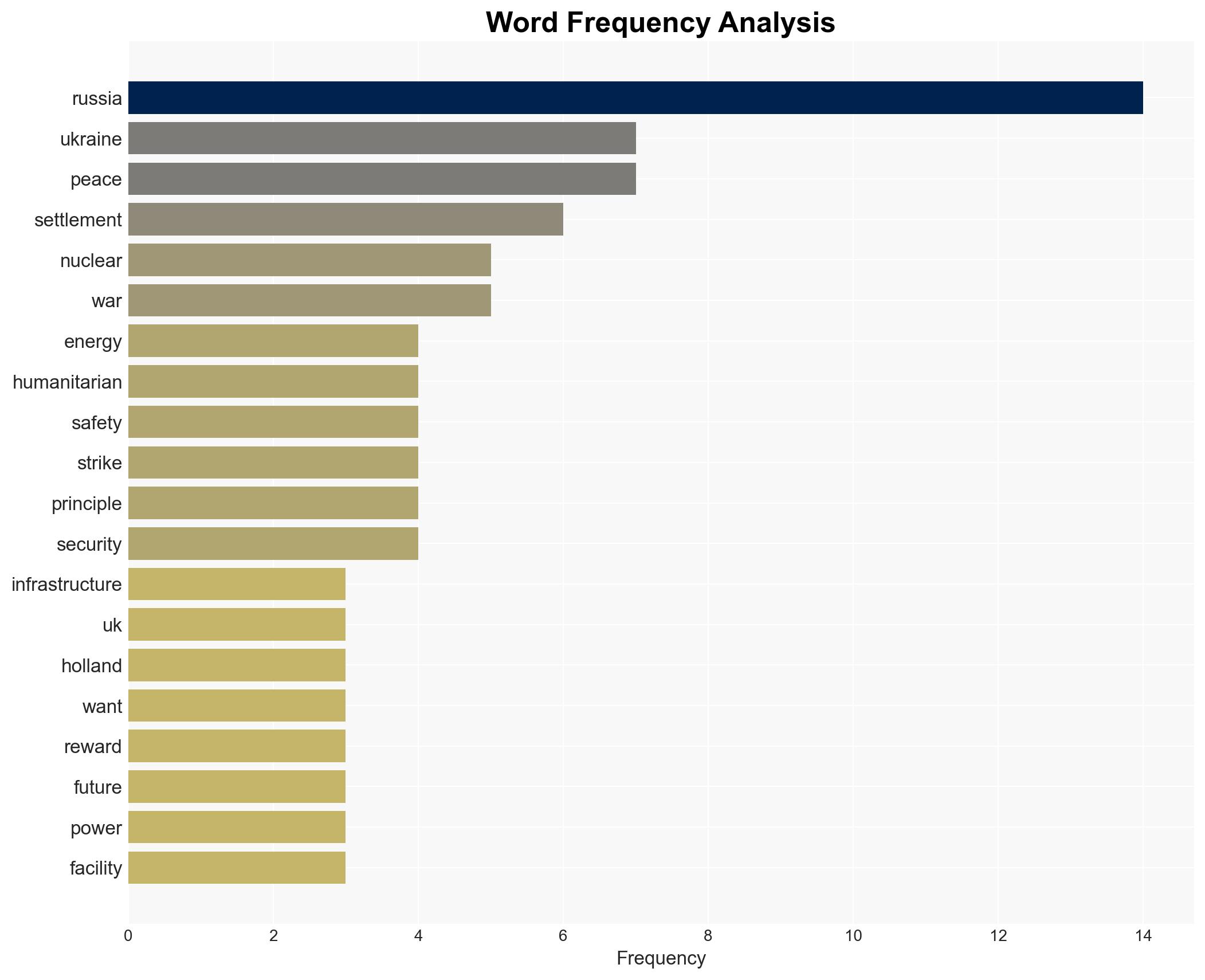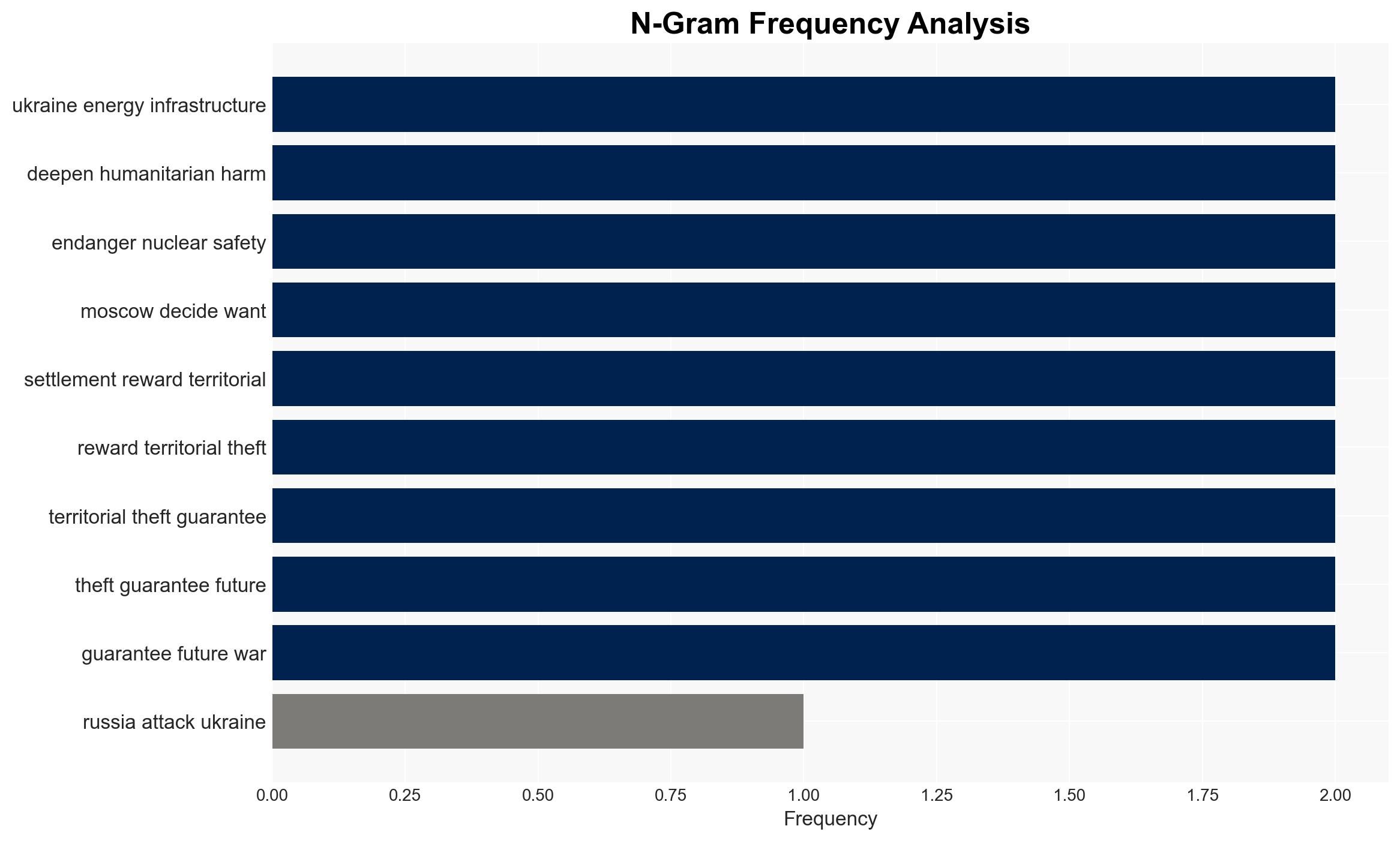Russia’s attacks on Ukraine’s energy infrastructure deepen humanitarian harm and endanger nuclear safety UK statement to the OSCE – Globalsecurity.org
Published on: 2025-11-14
AI-powered OSINT brief from verified open sources. Automated NLP signal extraction with human verification. See our Methodology and Why WorldWideWatchers.
Intelligence Report: Russia’s attacks on Ukraine’s energy infrastructure deepen humanitarian harm and endanger nuclear safety UK statement to the OSCE – Globalsecurity.org
1. BLUF (Bottom Line Up Front)
With a high confidence level, it is assessed that Russia’s continued attacks on Ukraine’s energy infrastructure are strategically aimed at weakening Ukraine’s resilience and forcing concessions, while simultaneously testing international resolve. The recommended action is to enhance support for Ukraine’s energy infrastructure resilience and increase diplomatic pressure on Russia through international forums.
2. Competing Hypotheses
Hypothesis 1: Russia’s attacks are primarily aimed at degrading Ukraine’s energy infrastructure to weaken civilian morale and force political concessions.
Hypothesis 2: The attacks are a strategic maneuver to provoke international intervention or response, testing the limits of Western support for Ukraine.
Hypothesis 1 is more likely given the pattern of targeting critical infrastructure, which aligns with historical Russian tactics to undermine adversary resilience. Hypothesis 2, while plausible, lacks direct evidence of intent to provoke international military engagement.
3. Key Assumptions and Red Flags
Assumptions: It is assumed that Russia’s strategic objectives include territorial control and political influence over Ukraine. The assumption that Russia seeks to avoid direct confrontation with NATO remains critical.
Red Flags: Increased Russian rhetoric about Western intervention could signal a shift towards Hypothesis 2. Additionally, any significant changes in Russian military posture near NATO borders would be concerning.
4. Implications and Strategic Risks
The continued degradation of Ukraine’s energy infrastructure poses significant humanitarian risks, potentially leading to a refugee crisis in Europe. Politically, it could pressure the Ukrainian government to negotiate under duress. Economically, it may strain European energy markets. Cyber threats could escalate as Russia may target Western energy systems in retaliation for support to Ukraine.
5. Recommendations and Outlook
- Actionable Steps: Increase support for Ukraine’s energy infrastructure resilience, including technical aid and financial support. Enhance intelligence sharing with Ukraine to preempt further attacks.
- Best Scenario: Diplomatic pressure leads to a cessation of attacks and a negotiated settlement respecting Ukraine’s sovereignty.
- Worst Scenario: Escalation leads to a broader conflict involving NATO, with significant regional instability.
- Most-likely Scenario: Continued attritional conflict with periodic escalations and international diplomatic efforts to manage tensions.
6. Key Individuals and Entities
Neil Holland, UK Ambassador to the OSCE, represents the UK’s diplomatic stance. The International Atomic Energy Agency (IAEA) is a critical entity in monitoring nuclear safety risks.
7. Thematic Tags
Structured Analytic Techniques Applied
- Cognitive Bias Stress Test: Expose and correct potential biases in assessments through red-teaming and structured challenge.
- Bayesian Scenario Modeling: Use probabilistic forecasting for conflict trajectories or escalation likelihood.
- Network Influence Mapping: Map influence relationships to assess actor impact.
Explore more:
National Security Threats Briefs ·
Daily Summary ·
Support us
·





